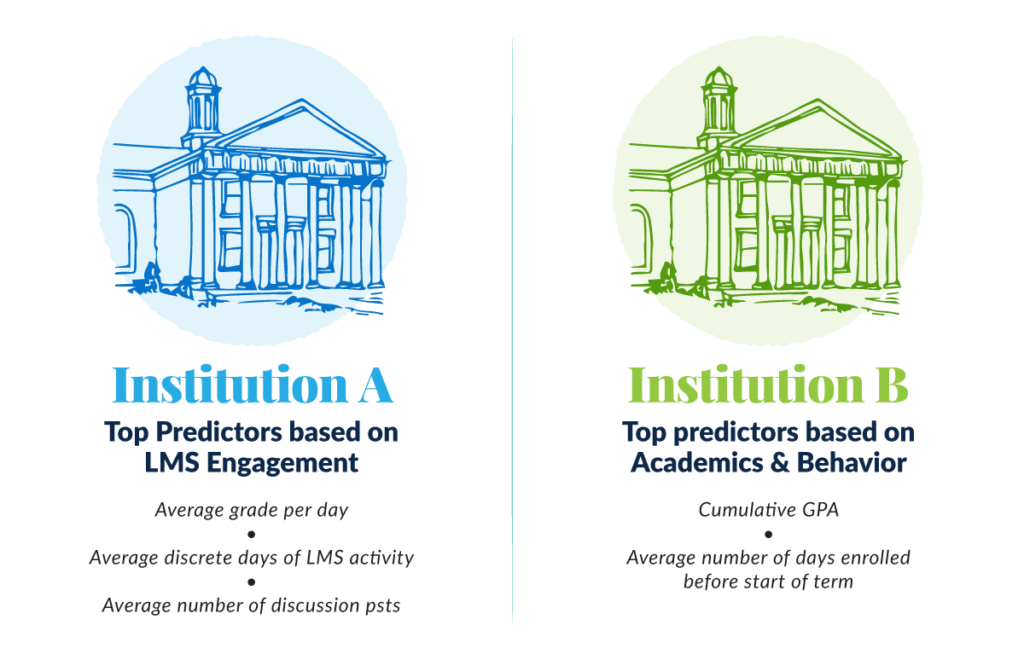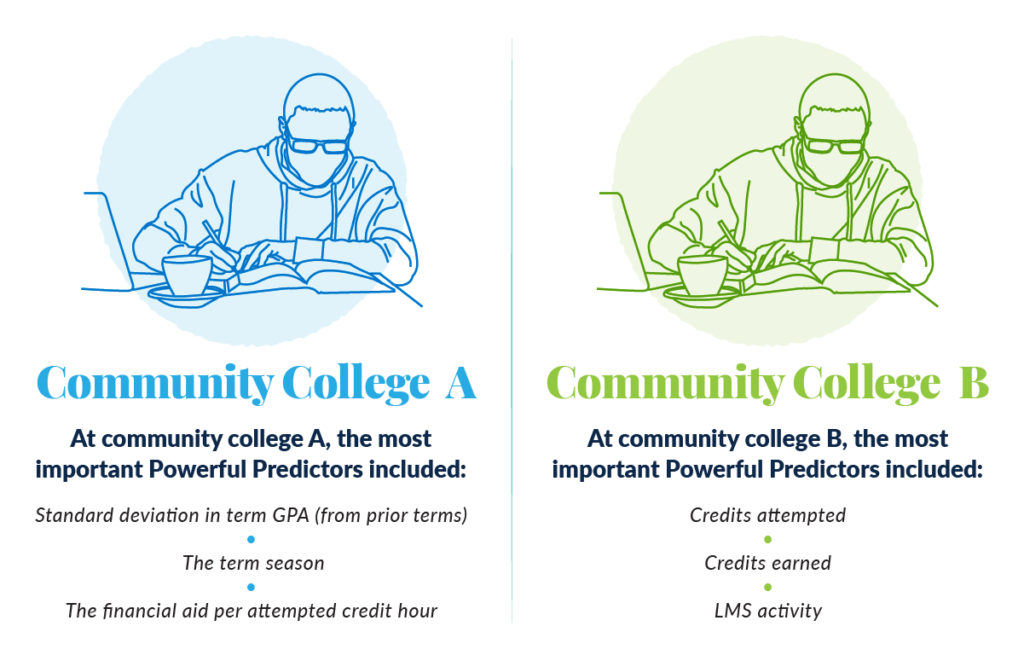
Why Institution-Specific Analytics Improve Student Outcomes
Share this Post
Although higher education institutions may appear similar, our work with hundreds of colleges and universities reminds us that no two are alike. Even those that share similar sizes, student populations, or structures have different combinations of factors impacting the success of their students.
Our most successful partners understand the unique nature of their institutions. They go beyond just using general best practices to improve student outcomes; they use specific insights about their institution and student groups to tailor those practices or create interventions. This way, they can deliver the most effective support to their specific students.
What are Institution-Specific Insights?
Most student success analytics providers only use historical and demographic data in a generic modeling process to generate their student persistence and success predictions. This means your insight into a student’s likelihood to persist at your institution is determined by what’s happening at other institutions. This limits visibility into who might benefit from extra support and provides zero guidance on which interventions may or may not benefit that student.
On the other hand, institution-specific insights are predictions and analyses that are generated based on each institution’s unique historical and ongoing behavioral data set. These insights allow institutions to combine all of their data to build a complete view of the student experience, providing valuable information to leaders and their teams about which students are in need and which interventions are most effective for specific student populations at their institution. This enables institutions to make informed decisions and take proactive measures to improve student success and retention.
Institution-specific insights like the Civitas Learning Platform’s Powerful Predictors use data science to surface the top ten student persistence and success predictors for different student groups at a particular institution. This actionable insight allows leaders to understand the demographic, academic, behavioral, and financial factors most likely to influence their student’s success. This knowledge allows them to design specific policies, programming, and communication to help students proactively.
Similar Institutions Can Have Different Predictors of Student Success
For example, two partner universities with similar student profiles and retention rates surfaced radically different Powerful Predictors.

In another example, two community colleges, each serving a combination of working adults and recent high school graduates, surfaced very different Powerful Predictors, even when filtered only to assess female students pursuing an associate’s degree.

Despite these institutions’ similarities, they experienced entirely different drivers for student persistence toward graduation. Because what is most impactful for student success differs dramatically between these two institutions, it is unlikely that the same approach to student success would work.
Institution-Specific Analytics Preserve Precious Resources
Institution-specific insights remove the guesswork. Rather than implementing policies, practices, and programs based on generalized best practices, institution-specific student success analytics enable leaders to hone in on the precise factors that impact student success at their institution. Instead of spending precious resources on interventions that might work, knowing what impacts students empowers leaders to allocate resources to the most effective interventions.
While some effective practices trends and factors commonly surface from institution to institution, the data show that the factors influencing persistence at each institution and which students who need support are unique. This means leaders need the ability to gain insight and understanding from student success analytics specific to their institution. This leads to iterative, informed action and strategic resource allocation that results in cumulative gains over time – adding up to a significant return on investment from student success initiatives and improvements in student outcomes.



